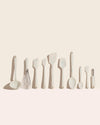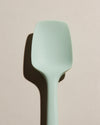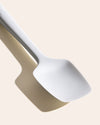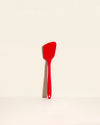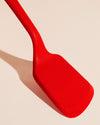Recipes
How To Butter Baste a Steak Like a Professional Chef
Published
May 14, 2024
Reviewed by
Suze Dowling

Butter basting a steak is a culinary technique that transforms an ordinary steak into a succulent masterpiece that tantalizes the taste buds. Professional chefs often use this method to enhance the flavor, juiciness, and overall dining experience of a steak.
In this comprehensive guide, we’ll chat about everything to know when butter basting a steak, offering you the knowledge and skills to replicate this professional cooking technique in your own kitchen.
What Is Butter Basting?
When it comes to cooking a steak, butter basting involves continually spooning hot, melted butter over the steak as it cooks, infusing it with rich flavor and luxurious texture.
Unlike traditional grilling or pan-searing methods, butter basting offers a unique way to impart a buttery richness to the steak while ensuring that it remains moist and tender throughout the cooking process.
One of the key benefits of butter basting is its ability to elevate the overall taste profile of the steak. The butter adds depth and richness while complementing the natural flavors of the meat. Additionally, the constant basting helps prevent the steak from drying out, resulting in a juicier and more flavorful end product.
When it comes to selecting fats for basting, butter stands out as the preferred choice among chefs for its rich, nutty flavor and ability to enhance the steak's taste.
Selecting the Right Cut of Steak
When it comes to butter basting, selecting the right cut is essential. Look for a well-marbled steak with a good fat-to-lean ratio. Ideal cuts include ribeye, filet mignon, and New York strip. Opt for steaks that are at least one inch thick, preferably high-quality grass-fed or prime-grade beef, for best results.
How To Prepare Your Steak for Basting
Before getting into the butter basting process, it's essential to properly prepare your steak to ensure a successful outcome. Here are a few key steps to follow:
-
Seasoning the Steak: Season your steak generously with salt and pepper on both sides. You can also incorporate additional seasonings like garlic powder, onion powder, or smoked paprika for added flavor.
-
Bringing the Steak To Room Temperature: Allow the steak to sit at room temperature for about 30 minutes before cooking. This ensures more even cooking and helps the steak retain its juices during the basting process.
-
Preheating the Pan: Heat a heavy-bottomed skillet or cast-iron pan over medium-high heat. Make sure the pan is hot enough to achieve a good sear on the steak once it hits the cooking surface.
-
Choosing the Right Cooking Equipment: Select a pan that allows enough space for the steak to cook without overcrowding. This ensures that the steak sears properly and absorbs the flavors of the butter during basting.
By following these preparatory steps, you'll set the stage for a successful butter basting process that results in a beautifully cooked and flavorful steak.
Butter Basting Technique Step-by-Step
Here is your step-by-step guide on butter basting the perfect steak:
Step 1: Searing the Steak
Place the seasoned steak in the preheated pan and let it sear undisturbed for a few minutes to develop a crust. Flip the steak once a golden-brown sear has formed on the bottom.
Step 2: Adding Butter and Aromatics to the Pan
Add a few tablespoons of butter to the pan along with aromatics like garlic, thyme, or rosemary for additional flavor. Allow the butter to melt and infuse with the aromatics before proceeding to the next step.
Step 3: Basting the Steak with Butter Continuously
Using a spoon or basting brush, continuously spoon the melted butter over the steak while it cooks. This helps keep the steak moist and imparts a rich, buttery flavor. Continue basting the steak for a few minutes on each side to ensure even flavor distribution.
Step 4: Adjusting Heat and Flipping the Steak
Adjust the heat as needed to prevent burning the butter while basting. Flip the steak occasionally to ensure even cooking and basting on both sides.
Step 5: Resting the Steak Before Serving
Once the steak reaches the desired level of doneness, remove it from the heat and let it rest for a few minutes before slicing. Resting lets the juices redistribute within the steak, resulting in a tender and juicy final product.
What Are Tips and Tricks for Perfect Butter Basting?
The sheer addition of butter alone will make your steak taste better, but there are a few additional techniques to take it to the next level. It’s important to maintain a moderate level of heat to prevent the butter from burning and to ensure the steak cooks evenly.
Don’t be shy about experimenting with different herbs and spices. You can create your own compound butter by mixing in herbs, spices, or citrus zest to customize the flavor profile of your butter basted steak.
Simply add them directly to the butter to infuse your steak with complementary flavors. You might even consider incorporating a splash of red wine or beef broth along with your butter for added depth and complexity.
Overcoming Common Challenges
Setting the right temperature is essential for achieving the desired level of doneness with butter basting and cooking a steak in general.
Using too high a heat can cause the butter to burn, which will give your steak a bitter taste, but undercooked meat poses a risk of foodborne illness. The best way to ensure your meat is cooked thoroughly is to rely on a meat thermometer. This is a worthwhile investment since it yields consistent results and gives you peace of mind about food safety.
Also, try not to overcrowd the pan since it can prevent the steak from searing properly and absorbing the buttery flavors. Opt for a large cast-iron skillet or even use two if you’re preparing more than one steak, so each has plenty of room to cook properly.
You can adapt your technique based on the cut of steak you have. For thicker cuts, you’ll want longer basting times to ensure even cooking and flavor absorption. Thinner or leaner cuts of steak will require much shorter searing and basting times to avoid overcooking.
We know that steak will smell delicious, and you and your family will be ready to try it! But a little patience will go a long way, so don’t skip the resting step. Resting a steak after cooking lets the juices redistribute, giving you a tender, juicy result worth the few extra minutes.
Pairing Butter Basted Steaks With Side Dishes and Drinks
Pairing your butter basted steak with the right side dishes will make your meal even more memorable. Some recommendations to consider that go well with the rich flavors of a butter basted steak include roasted veggies like asparagus, Brussels sprouts, or carrots.
You can never go wrong with creamy mashed potatoes. They’re a classic accompaniment that ensures a hearty meal! For a lighter option, you might serve a fresh green salad with a vinaigrette dressing to help balance out the richness of the steak.
When it comes to wine pairings, consider red wines like Cabernet Sauvignon, Merlot, or Malbec to complement the bold flavors of the steak. For non-alcoholic options, sparkling water with a twist of lemon or a refreshing iced tea can also make excellent beverage choices.
The Takeaway
Mastering the art of butter basting a steak like a professional chef is a rewarding culinary feat that transforms a simple dish into a gourmet experience. By following the step-by-step techniques, tips, and creative ideas outlined in this guide, you’ll be well on your way to impressing your family and friends with perfectly delicious butter basted steaks.
At GIR, we hope to help add creativity and passion to your time experimenting in the kitchen! Our goal is to help you embrace the joy of cooking and the satisfaction that comes from sharing a delicious meal that you've prepared with friends and loved ones, creating special memories around the table.
Check out our thoughtfully curated collection of kitchen tools to elevate your cooking experience today. Cheers to infusing every meal with a dash of fun!
Sources:
How to Use Butter in Cooking and Baking | Milk Means More
Safe Minimum Internal Temperature Chart | USDA
What Is Searing? | The Spruce Eats
Why You Should Always Rest Your Steak After Cooking | Steak School
